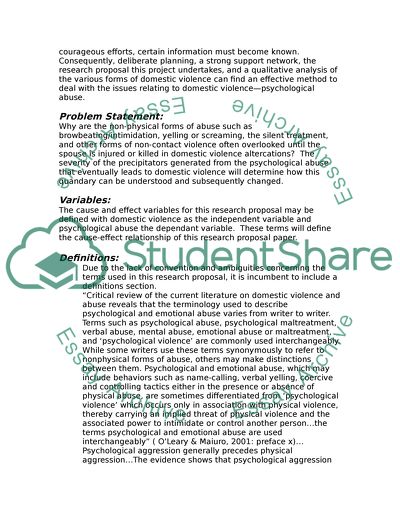Cite this document
(Domestic Violence: Psychological Abuse Research Proposal, n.d.)
Domestic Violence: Psychological Abuse Research Proposal. Retrieved from https://studentshare.org/social-science/1560400-domestic-violence-psychological-abuse
Domestic Violence: Psychological Abuse Research Proposal. Retrieved from https://studentshare.org/social-science/1560400-domestic-violence-psychological-abuse
(Domestic Violence: Psychological Abuse Research Proposal)
Domestic Violence: Psychological Abuse Research Proposal. https://studentshare.org/social-science/1560400-domestic-violence-psychological-abuse.
Domestic Violence: Psychological Abuse Research Proposal. https://studentshare.org/social-science/1560400-domestic-violence-psychological-abuse.
“Domestic Violence: Psychological Abuse Research Proposal”, n.d. https://studentshare.org/social-science/1560400-domestic-violence-psychological-abuse.


